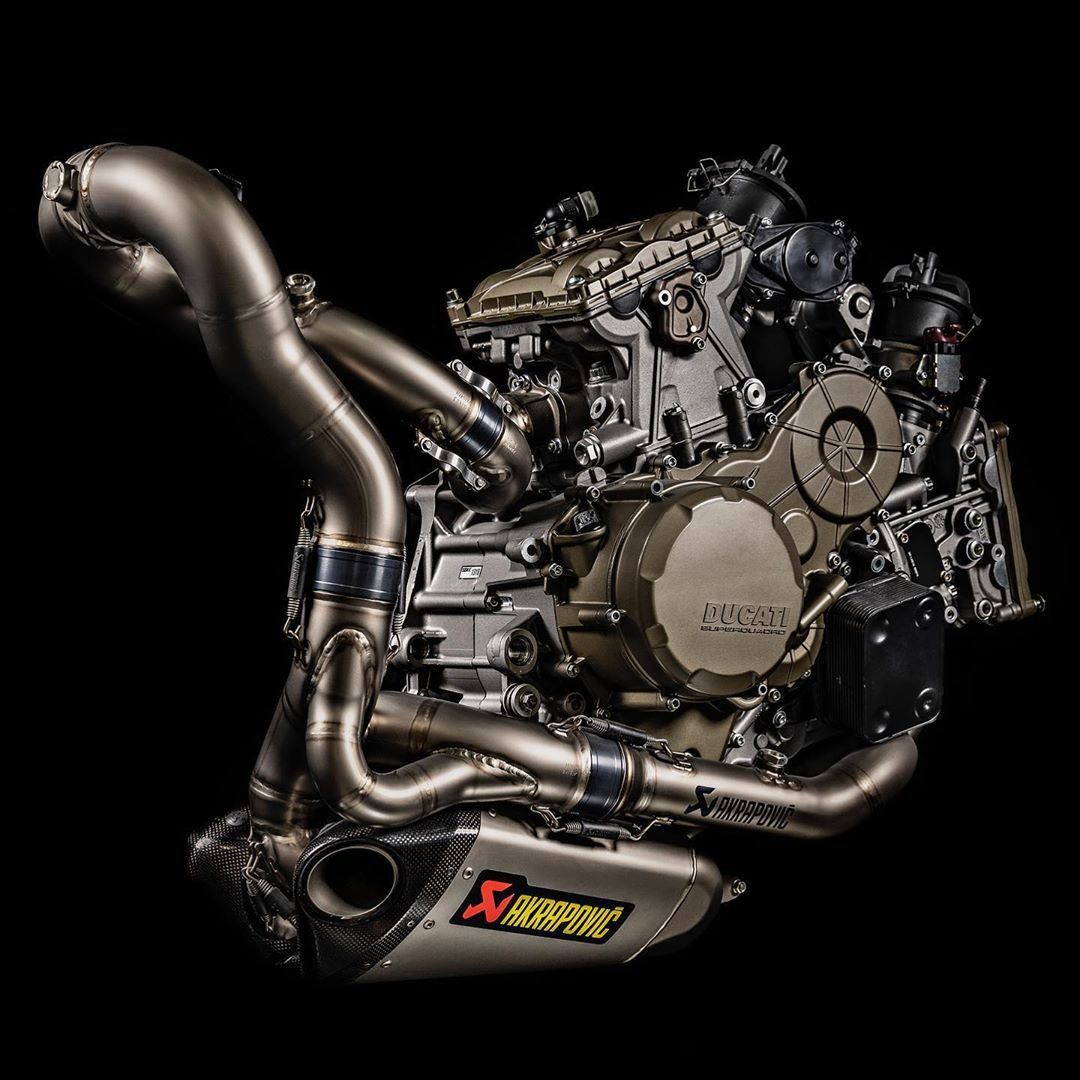If you've ever been excited about Ducati motorcycles and wondered what sets them apart from other vehicles, you might have come across the term "Desmo." Ducati's use of desmodromic valve technology is a hallmark of their engines, but what exactly does it mean? And why is it so significant? In this blog post, we'll dive deep into the world of the Desmo, exploring its origins, how it works, benefits, and why it remains a hallmark of Ducati engineering.
What is Desmodromic Valve Technology?
Desmodromic, often simply called "desmo," refers to a special type of valve control in internal combustion engines. Unlike conventional valve systems that use springs to close the valves, desmodromic uses a system with two camshafts. This system not only opens the valves, but also closes them via a separate series of levers and camshafts.
How it works
In a conventional engine, the valves are opened by the camshaft and then closed by the force of the valve springs. At higher speeds, the springs may be less effective, which can lead to problems such as valve slamming—a situation where the valve does not close properly and can potentially cause serious engine damage.
The desmodromic system gets around this problem by completely eliminating the need for valve springs. Instead, it uses additional camshafts and levers to directly control both the opening and closing of the valves. This design provides precise valve timing and prevents the problem of valve slamming, even at extremely high rpm.
The Story of Desmo
The concept of desmodromic valves was first patented by Gustav Mees in 1896, but it took decades for the technology to achieve significant success. In the early 20th century, desmodromic valves were successfully used in marine engines, proving their potential for high-performance applications.
Mercedes-Benz embraced Desmo technology in the 1950s, incorporating it into their inline-8 racing engines used in the 300SLR racing car and the W196 Formula 1 car. These engines were extremely successful on the racing scene, demonstrating the benefits of Desmo technology in terms of performance and reliability.
Despite its advantages, the complexity and cost of Desmo technology led many manufacturers to abandon the technology in favor of simpler systems. Ducati, under the leadership of renowned engineer Fabio Taglioni, recognized the potential of Desmo technology and adopted it for their 125cc Grand Prix motorcycles in the early 1970s. This decision proved to be groundbreaking and established Ducati as a dominant force in motorcycle racing.
Why Ducati sticks with Desmo
Ducati's commitment to desmodromic valve technology sets them apart from other motorcycle manufacturers. Every Ducati bike, from the entry-level scrambler models to the high-performance MotoGP machines, features this innovative valve system. Here are the reasons why Ducati remains loyal to Desmo technology:
-
Performance : Desmo allows precise control of the valves, which is crucial for high-revving engines. This precision contributes to optimal performance, especially in racing scenarios where every bit of power and efficiency counts.
-
Reliability : By eliminating valve springs, Desmo reduces the risk of valve slam and related problems. This contributes to the overall reliability and longevity of the engine, making it a favorite among racers and enthusiasts.
-
Brand identity : Desmodromic valves are a hallmark of Ducati's engineering prowess. For many, owning a Ducati is not just about the pleasure of riding it, but also about belonging to a tradition of innovation and excellence.
The disadvantages of Desmo
Although Desmo offers several advantages, it is not without its disadvantages:
-
Cost : The additional components and machining required for Desmo systems make them more expensive to produce and maintain. This cost factor is often reflected in the price of Ducati motorcycles.
-
Complexity : The maintenance process for Desmo engines is more complex compared to traditional systems. This complexity can lead to higher maintenance costs and requires trained technicians.
Despite these challenges, Desmo's unique advantages keep Ducati at the forefront of motorcycle technology and performance.
Conclusion
Desmodromic valve technology is a fascinating piece of engineering that embodies Ducati's commitment to innovation and performance. Even if it is not necessary for all types of engines, it remains an essential feature of Ducati motorcycles and contributes to their uniqueness and appeal.
The next time you see a Ducati, know that beneath its sleek exterior lies a marvel of engineering that has stood the test of time. Whether you're an experienced rider or a curious enthusiast, understanding Desmo will help you appreciate the intricate details that make Ducati motorcycles so exceptional.


Share:
Dealing with the heat on a Ducati: causes and solutions
Ducati: Unique aesthetics that inspire